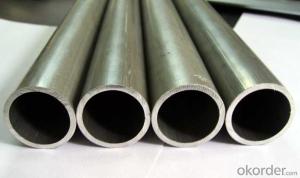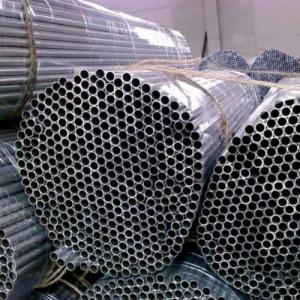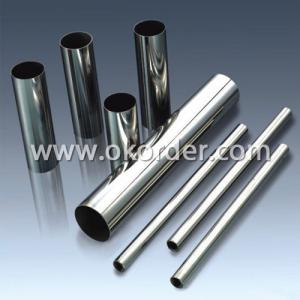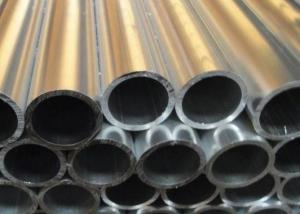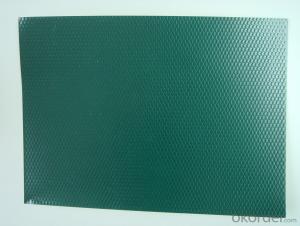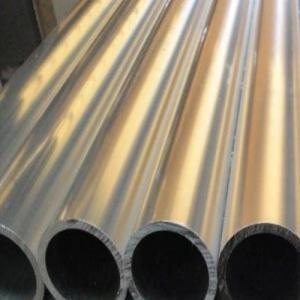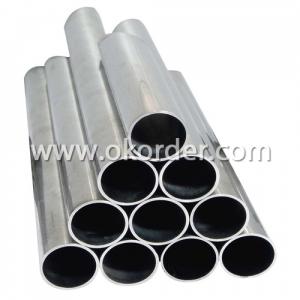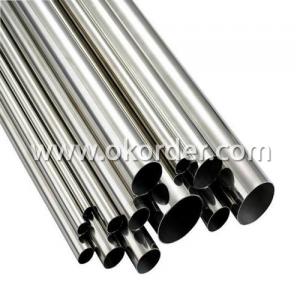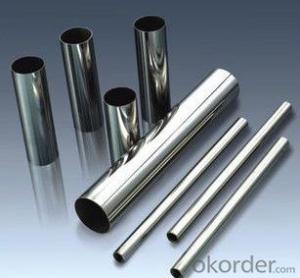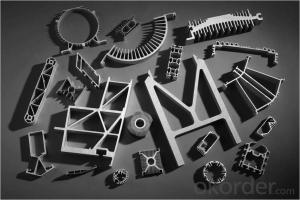Aluminum Seamless Tube Alloy 5000
- Loading Port:
- China Main Port
- Payment Terms:
- TT OR LC
- Min Order Qty:
- -
- Supply Capability:
- -
OKorder Service Pledge
Quality Product, Order Online Tracking, Timely Delivery
OKorder Financial Service
Credit Rating, Credit Services, Credit Purchasing
You Might Also Like
Specification of aluminum tube/pipe
Alloy: | 2A12, 2014, 2014A, 2017A, 2024, 3003, 5005, 5754, 5083, 7020, 7075 etc |
Temper: | O F T3-T6 |
Out diameter: | 15-220mm |
Wall thickness: | 1.0-60mm |
Length: | 6000mm or as need |
We can provide a full range services including: extrusion, anodizing, machining . we produce aluminium extrusions, aluminum tube, seamless aluminum tube, aluminum bar, aluminum angle, aluminum channels, and industry profiles, in a wide range of commercial alloys, including 1050, 1200, 2A12, 2014, 2014A, 2017A, 2024, 3003, 5083, 6005A, 6060, 6061, 6063, 6063A, 6082, 6463, 7020, 7075 subject to temper requirements and product specification.
Aluminium profiles(classifcation according to surface treatment requirements)
1,Anodizing profiles
2,Electrophresis profiles
3,Powder coating profiles
4,Wood finish profiles
5,Polished profiles
6,PVDF coating profiles
- Q:What are the different types of aluminum pipes available?
- There are several different types of aluminum pipes available for various applications. 1. Seamless Aluminum Pipes: These pipes are manufactured without any weld or seam. They are highly durable and can withstand high pressure and temperature. Seamless aluminum pipes are commonly used in aerospace, automotive, and marine industries. 2. Welded Aluminum Pipes: These pipes are formed by welding two or more pieces of aluminum together. They are cost-effective and suitable for applications that don't require as much strength as seamless pipes. Welded aluminum pipes are commonly used in construction, irrigation, and HVAC systems. 3. Extruded Aluminum Pipes: These pipes are formed by pushing heated aluminum billets through a shaped die, resulting in a continuous length of pipe with a constant cross-section. Extruded aluminum pipes are lightweight, corrosion-resistant, and have excellent thermal conductivity. They are widely used in the construction, automotive, and electrical industries. 4. Drawn Aluminum Pipes: These pipes are produced by drawing an extruded aluminum tube through a die to reduce its diameter and increase its length. Drawn aluminum pipes have improved surface finish and tighter tolerances compared to extruded pipes. They are commonly used in the manufacturing of furniture, lighting fixtures, and heat exchangers. 5. Aluminum Alloy Pipes: These pipes are made from aluminum alloys, which are mixtures of aluminum with other elements such as copper, magnesium, or zinc. Aluminum alloys enhance the strength, corrosion resistance, and other properties of the pipes. They are used in a wide range of applications, including aerospace, automotive, and structural engineering. It is important to consider the specific requirements of your project or application when choosing the type of aluminum pipe. Factors such as pressure rating, temperature resistance, corrosion resistance, and cost should be taken into account to ensure the most suitable option is selected.
- Q:What are the different wall thickness options for aluminum pipes?
- The wall thickness options for aluminum pipes can vary depending on the specific application and industry requirements. Generally, aluminum pipes are available in a range of wall thicknesses to accommodate different needs. The most common options for wall thicknesses in aluminum pipes include standard, schedule, and nominal sizes. Standard wall thicknesses are typically used in industrial applications where strength and durability are important. These pipes are manufactured with specific dimensions to meet industry standards and are often used in structural applications, such as construction or engineering projects. Schedule wall thicknesses, on the other hand, are primarily used in pressure applications, such as plumbing or fluid transfer systems. These pipes are designed to handle different levels of pressure and are identified by a schedule number, ranging from Schedule 5 to Schedule 160. Each schedule number corresponds to a specific wall thickness, with higher numbers indicating thicker walls capable of withstanding higher pressures. Nominal wall thicknesses refer to a range of wall thicknesses that fall within a certain tolerance level. These pipes are often used in general-purpose applications or where precise dimensions are not critical. The nominal size is a rounded value that corresponds to the approximate inside diameter of the pipe, while the wall thickness can vary within a certain range. It is important to note that the specific wall thickness options for aluminum pipes may vary depending on the manufacturer, industry standards, or custom requirements. Therefore, it is essential to consult the relevant specifications or consult with a supplier to determine the available options for a particular application.
- Q:How is the seamless pipe or tube seam identification for enlighten heroes?
- Just look at the mold and see the directions
- Q:Can aluminum pipes be used for structural supports in buildings?
- Aluminum pipes are indeed suitable for serving as structural supports in buildings. With its lightweight nature and resistance to corrosion, aluminum stands out as a perfect option for structural purposes. Its exceptional strength-to-weight ratio enables it to bear heavy loads while maintaining its relative lightness. Moreover, aluminum pipes offer versatility in terms of shaping and welding, making them adaptable to diverse structural designs. Nonetheless, it is crucial to take into account the individual demands and regulations of every building project prior to employing aluminum pipes as structural supports.
- Q:Are aluminum pipes more expensive than other materials?
- The price of aluminum pipes can fluctuate based on a variety of factors, leading to variations when compared to other materials. Generally, aluminum pipes are a more budget-friendly option when compared to materials such as stainless steel or copper. However, they might be pricier than materials like PVC or galvanized steel. Furthermore, the cost of aluminum pipes can also be influenced by factors such as pipe size, thickness, manufacturing methods, and supplier. To determine the cost-effectiveness of aluminum pipes for your intended use, it is crucial to consider your specific requirements and budget.
- Q:What are the advantages of using aluminum pipes?
- There are several advantages of using aluminum pipes, making them a popular choice in various industries and applications. Firstly, aluminum pipes are lightweight, which makes them easy to handle and transport. This characteristic is particularly beneficial in industries such as automotive and aerospace, where reducing weight is crucial for fuel efficiency and overall performance. Additionally, the lightweight nature of aluminum pipes makes them easier to install and requires less effort during maintenance or repairs. Secondly, aluminum pipes have excellent corrosion resistance. Aluminum naturally forms a protective oxide layer on its surface, preventing it from rusting or deteriorating in harsh environments. This resistance to corrosion makes aluminum pipes ideal for applications where they are exposed to moisture, chemicals, or extreme temperatures. They are commonly used in plumbing, HVAC systems, and marine applications. Another advantage of aluminum pipes is their high thermal conductivity. Aluminum is an excellent conductor of heat, allowing for efficient heat transfer. This characteristic makes aluminum pipes suitable for applications where heat dissipation is critical, such as heat exchangers and radiators. Furthermore, aluminum pipes are highly durable and have a long lifespan. They have a high strength-to-weight ratio, meaning they are strong enough to withstand pressure and stress while being lightweight. This durability makes them a cost-effective choice as they require fewer replacements or repairs over time. Lastly, aluminum pipes are environmentally friendly. Aluminum is a highly recyclable material, and recycling it requires only a fraction of the energy needed to produce new aluminum. Choosing aluminum pipes contributes to sustainable practices and reduces the overall carbon footprint. In conclusion, the advantages of using aluminum pipes include their lightweight nature, corrosion resistance, high thermal conductivity, durability, and environmental friendliness. These qualities make aluminum pipes a versatile and reliable choice for various industries and applications.
- Q:What are the advantages of using aluminum pipes over other materials?
- There are several advantages of using aluminum pipes over other materials. Firstly, aluminum pipes are known for their lightweight nature. Compared to other materials such as steel or copper, aluminum pipes are significantly lighter, making them easier to handle and transport. This makes them a preferred choice in various industries, especially for applications where weight reduction is important, such as aerospace and automotive industries. Secondly, aluminum pipes have excellent corrosion resistance. Aluminum naturally forms a protective oxide layer on its surface, which helps prevent rust and corrosion. This makes aluminum pipes suitable for use in environments that are exposed to moisture, chemicals, or extreme weather conditions. Additionally, their resistance to corrosion ensures a longer lifespan and reduces the need for frequent maintenance and replacements. Furthermore, aluminum pipes possess high thermal conductivity. They are able to efficiently transfer heat, making them ideal for applications that require heat exchange or thermal management. This characteristic is particularly beneficial in industries like HVAC, refrigeration, and automotive cooling systems, where heat dissipation is critical. Another advantage of aluminum pipes is their versatility. Aluminum is a highly malleable material, allowing it to be easily formed into various shapes and sizes. This flexibility makes aluminum pipes suitable for a wide range of applications, from plumbing and irrigation systems to structural frameworks and electrical conduits. Lastly, aluminum pipes are environmentally friendly. Aluminum is a highly recyclable material, and the recycling process requires only a fraction of the energy compared to the initial production. By using aluminum pipes, companies can contribute to sustainability efforts by reducing their carbon footprint and minimizing waste. In summary, the advantages of using aluminum pipes over other materials include their lightweight nature, excellent corrosion resistance, high thermal conductivity, versatility, and environmental friendliness. These characteristics make aluminum pipes a preferred choice in many industries, providing numerous benefits in terms of efficiency, durability, and sustainability.
- Q:How do aluminum pipes compare to plastic pipes in terms of durability?
- Aluminum pipes generally offer higher durability compared to plastic pipes. Aluminum is a stronger and more rigid material, making it less prone to cracking, warping, or breaking under pressure or extreme temperatures. Additionally, aluminum pipes have a longer lifespan and are less susceptible to degradation from UV exposure or chemical reactions. However, plastic pipes may be more resistant to corrosion and are often cheaper and easier to install. The choice between aluminum and plastic pipes ultimately depends on the specific application and desired durability requirements.
- Q:Is the Ronshen refrigerator made of brass tubes or made of aluminium tubes?!
- The Ronshen refrigerator is made of aluminium tubes.Aluminum tube is a kind of nonferrous metal pipe, which is made of pure aluminum or aluminum alloy and is extruded into a hollow metal tube with longitudinal length.Advantages of aluminum pipe:First, welding technology advantages.Two is the service life advantage.Three is energy-saving advantages, insulation effect is better, the more power saving.Four is excellent bending performance, easy to install.
- Q:What are the common insulation materials used for aluminum pipes?
- The common insulation materials used for aluminum pipes are fiberglass, foam insulation, and rubber insulation.
1. Manufacturer Overview |
|
|---|---|
| Location | |
| Year Established | |
| Annual Output Value | |
| Main Markets | |
| Company Certifications | |
2. Manufacturer Certificates |
|
|---|---|
| a) Certification Name | |
| Range | |
| Reference | |
| Validity Period | |
3. Manufacturer Capability |
|
|---|---|
| a)Trade Capacity | |
| Nearest Port | |
| Export Percentage | |
| No.of Employees in Trade Department | |
| Language Spoken: | |
| b)Factory Information | |
| Factory Size: | |
| No. of Production Lines | |
| Contract Manufacturing | |
| Product Price Range | |
Send your message to us
Aluminum Seamless Tube Alloy 5000
- Loading Port:
- China Main Port
- Payment Terms:
- TT OR LC
- Min Order Qty:
- -
- Supply Capability:
- -
OKorder Service Pledge
Quality Product, Order Online Tracking, Timely Delivery
OKorder Financial Service
Credit Rating, Credit Services, Credit Purchasing
Similar products
New products
Hot products
Hot Searches
Related keywords
